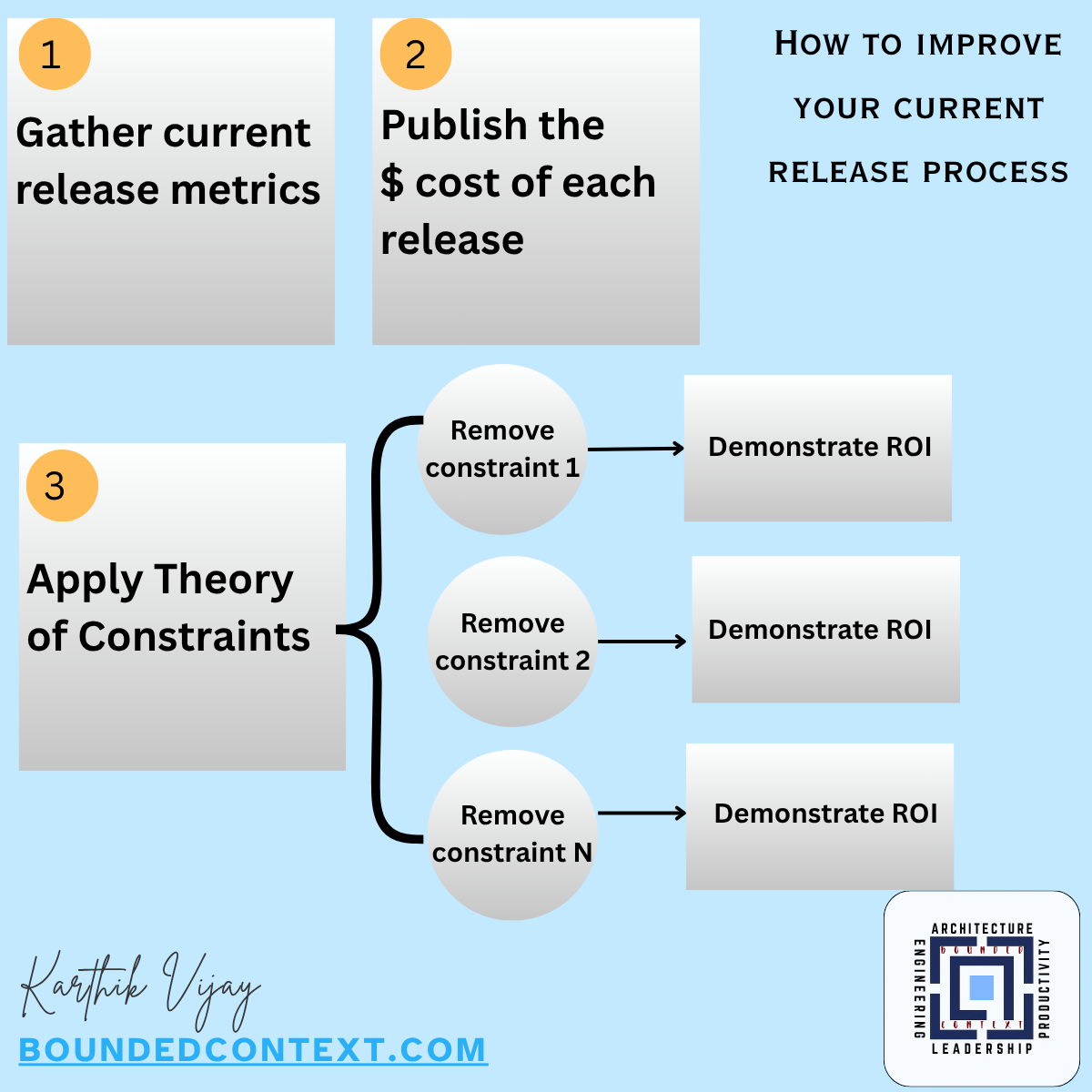🏁 Every software release is a win (or a lesson)

TL;DR
Frequent software releases are not just a sign of agility — they’re a strong indicator of organisational health. Your ability to release software often is a reflection of how well your systems — human and technical — are working together.
Releases should be regular, low-stress, reversible, and uneventful. When shipping code feels routine, you’ve built true delivery confidence.
Some teams and organsations treat releases as high-stakes events — something to fear, delay, or overprepare for. Understanding the why? enables us to identify actionable improvements , focus on what truly matters, and turn every release, even the ones that go wrong from time to time — into valuable feedback for the team and product.
Why should you release software often?
A team that can release often:
- Delivers value faster: Gets improvements and fixes to customers quickly, turning feedback into progress.
- Reduces risk: Keeps changes small and makes it easier to rollback.
- Fosters psychological safety: Encourages learning from mistakes and experimentation without fear of blame.
- Has a sound deployment strategy: Rolls out updates gradually — starting with a small group of users, monitoring outcomes, then expanding confidently.
- Relies on automation: Trusts CI/CD pipelines, automated tests, and monitoring to make releases routine and safe.
How Often Is Often?
High-performing teams treat every merge to master as a potential release. That mindset encourages smaller, safer changes and ensures the system is always in a deployable state. In practical terms, this may mean releasing software every day or even several times a day.
Releases don’t always have to deliver new features to customers. They can be minor refactors, bug fixes, or infrastructure improvements—anything that keeps the system healthy and the feedback loop short.
As a rule of thumb, if releasing software feels like a project instead of a habit, you probably aren’t releasing often enough.
Unable to Release Often? It’s a Symptom, Not the Problem

When teams can’t release frequently, it usually points to deeper issues. Some common problems include:
- Fear of breaking things: Often rooted in lack of test automation, missing observability or weak deployment strategies.
- History of breaking things: Past release failures can create organisational scar tissue — teams become cautious, reviews pile up, and velocity drops.
- Approval bottlenecks: Often added after past release failures as extra safety nets — but they rarely prevent new issues. Real improvement comes from strengthening practices, not adding more gates.
- Inability to release to a subset of users: Without deployment strategies like canary or blue-green releases, every deployment becomes all-or-nothing — increasing risk and slowing feedback.
- Too many teams need to be involved: When multiple teams must coordinate every release, it often signals overly coupled systems or unclear ownership boundaries — both of which slow delivery and increase risk.
These are structural issues, not just process hiccups. Fixing them isn’t about adding more checklists or meetings — it’s about redesigning your system for flow.
How to go about fixing your release problems?

- Make the cost of each release visible: This is the #1 step to get buy-in for improving the release process. Everyone loves cost savings. Quantify the time and effort lost to manual testing, coordination, and rollbacks — and put a $ figure on it to make the impact undeniable.
- Gather current release metrics: Track core metrics such as lead time, deployment frequency, change failure rate, and MTTR. Beyond highlighting friction, these metrics provide the data needed to estimate the cost of each release — reinforcing the case for improvement. Why do these metrics matter?
- Fix one constraint at a time: Use the Theory of constraints to identify the biggest friction in your release process — whether it’s manual QA, slow approvals, or deployment strategy — and tackle it before moving on to the next.
- Demonstrate ROI incrementally: Show quick wins — reduced cycle time, fewer hotfixes, smoother rollouts. Use those results to gain buy-in for deeper systemic changes.
- Automate strategically: Focus on CI/CD, testing, and monitoring that actually make releases smoother and faster. Let automation enable flow, not just tick boxes.
Over time, these small wins compound. Each improvement shortens your feedback loop, increases confidence, and makes releasing just another everyday activity — not a milestone event.
Why these metrics matter?
Tracking these DORA metrics gives teams clear, objective insight into delivery performance. They help uncover friction, improve flow, and support more frequent, reliable releases. Don’t stop there — feel free to track additional metrics that make sense for your organisation.
| Metric to Collect | What It Is | Why Collect It |
|---|---|---|
| Change Lead Time | Time to implement, test, and deliver code for a feature (measured from first commit to deployment). | Shows how quickly new features or fixes reach production, highlighting bottlenecks in the delivery process. |
| Deployment Frequency | Number of deployments in a given duration of time. | High frequency indicates a healthy pipeline and ability to deliver value to users continuously. |
| Change Failure Rate | Percentage of failed changes over all changes (regardless of success). | Helps identify stability issues and prioritize risk reduction in the delivery process. |
| Mean Time to Recovery (MTTR) | Time it takes to restore service after a production failure. | Low MTTR reduces the impact of failures and builds confidence to deploy frequently. |
The Bottom Line
Every release is a win or a lesson.
The faster you release, the faster you learn.
The faster you learn, the faster you win.
So if releases feel hard, resist the urge to push through with brute force. Instead, pause and revisit your delivery practices. Your release cadence is not just about shipping code — it’s a mirror of your organisation’s adaptability and trust.
🚀 Release often. Learn fast. Keep winning.
